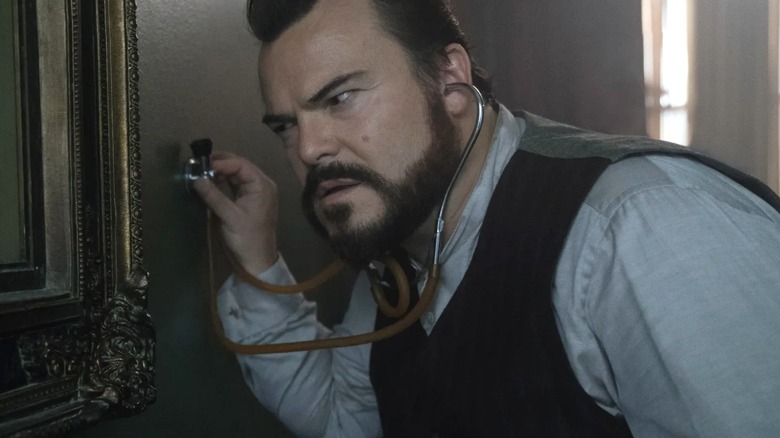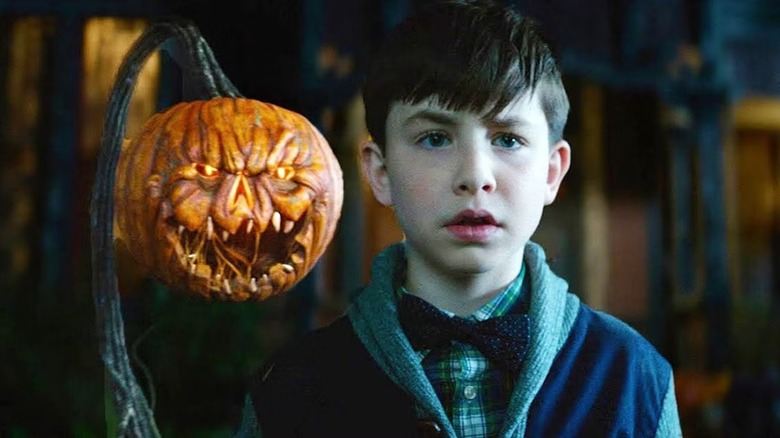John Bellairs’ “The House with a Clock in Its Walls” is the definition of a cozy horror story. Bellairs’ 1973 book fuses the supernatural with the mundane, where the familiar feels a bit off-kilter until it fully embraces the fantastical. It’s gothic horror meets weird fiction for young adults, evoking unbearable suspense from the moment our protagonist moves into the town of New Zebedee, Michigan. Given how delightfully spooky this book is, it is no surprise that Hollywood decided to adapt it into a dark fantasy comedy aimed at a younger demographic in 2018. Although key elements from Bellairs’ gothic horror tale were changed or omitted, Eli Roth’s “The House with a Clock in Its Walls” can be deemed a decently enjoyable adventure. However, if you’re partial towards the rustic charm of a book whose horror thrives on subtlety, then Roth’s CGI-infested, pop-colored extravaganza might start to feel a bit like an unbearable migraine.
Much is lost in the attempt to appeal to an audience whose idea of the occult stems from loud, flashy explorations of the subject matter, as opposed to the mysterious, understated intrigue of it all. This isn’t strictly Roth’s fault, as restraint has never been his forte as a horror director who revels in excess (his “Cabin Fever” and “Hostel” are good examples of such visceral maximalism). So, when Roth came on board, working closely with Amblin Entertainment and screenwriter Eric Kripke to bring this tale to life, he immediately wanted to increase the budget to incorporate more visual effects. His intention wasn’t misplaced, as the revamped story relied heavily on the titular house blatantly emerging as a character in its own right, demanding shenanigans that leaned towards the dramatic.
In an interview with VFX Voice, Roth explained that the film’s visual effects were developed in a way that would give audiences the illusion that they were practical effects. “As always, I want nobody to think that CG was involved,” Roth stated, revealing that he originally planned to include practical Jack-o’-lanterns before he replaced them with digital versions. While this does sound counterintuitive, it was based on a note the filmmaker got from Steven Spielberg. Suffice it to say, the “Jaws” director knows a thing or two about adding suspense to a scene that’s meant to be spooky and frightening.
Spielberg wanted a certain scene in The House with a Clock in Its Walls to be memorable
In Bellairs’ book, orphan Lewis Barnavelt moves in with his uncle Jonathan, who is a mediocre warlock trying his best to master the occult arts. In the film, Jack Black’s Jonathan is a more … spirited interpretation of the character, with the actor’s knack for improvisation on clear display throughout his performance. This excess blends well with the film’s ramped-up visual spectacle, where automatons come to life and lasers are blasted through a witch’s umbrella. Remember the Jack-o’-lanterns I mentioned above? Well, a certain sequence sees these CGI pumpkins gain sentience and wreak havoc, as these decorations are an extension of Jonathan’s house attacking its residents.
According to Roth, Spielberg was the one who wanted these pumpkins to move, as the intention was to convey “real danger” in a sequence meant to be “iconic.” To quote him directly:
“There’s this whole thing about how pumpkins ward off evil. They turn evil, start fighting, and vomit pumpkin guts. All of those things Spielberg loved too. He said, ‘This pumpkin scene should be iconic. Make it terrifying. Have real danger.’ I have dealt with visual effects before but never had the experience of designing a sequence from scratch that is so dependent on them. You have to trust that it’s all going to look amazing.”
Spielberg’s repeated request was for Roth and the VFX team to make the scene “scarier” — a request Creature Effects Inc. Founder Mark Rappaport helped accommodate. Rappaport revealed that the initial designs were based on Roth’s input, which underwent several iterations when the plan was to still shoot this sequence solely with the aid of practical effects:
“I would show many different iterations of the pumpkins, and Eli would comment on each with written notes such as, ‘Steven Spielberg’s request: ‘Please make scarier.’ We designed the pumpkins starting with scary and amusing, then scary and gross, then scarier and grosser, and finally ‘scarier not gross with teeth.’ “
Rappaport and co. had to work hard to acquire actual, massive pumpkins to sculpt directly on them, but the original idea to use only practical effects for this sequence was scrapped due to time constraints. As a result, a CGI-only route was taken instead, which also proved to be time-consuming since “the right balance” had to be struck between the movement and facial expressions of the pumpkins.
Although Spielberg’s note about moving, scary pumpkins was eventually incorporated into the film, the end result is truly ghoulish … and not in the way intended.



